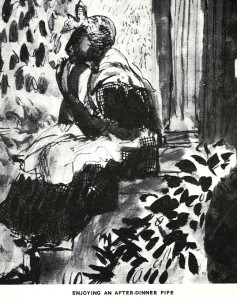As incredible as it may sound to us now, in the 1940s the Old Warren County Courthouse in Vicksburg was under threat of destruction from the very city itself.
The building is perched on the highest point in Vicksburg on land given by the family of the city’s founder, Newitt Vick. Construction began in the summer of 1858 on what was then to be a new Court House for Warren County. Contractors were the Weldon Brothers of Rodney, Mississippi, who used 100 highly skilled artisans to make the brick and erect the building, which was completed in 1860 for a cost of $100,000. During the War, the building dominated the city’s skyline and was the target of much Union shelling but suffered only one major hit. It was here on July 4, 1863 that the Stars and Bars were lowered and the Stars and Stripes were raised as General U.S. Grant reviewed his victorious army.

With the construction of a new Warren County Courthouse in 1939, the Old Courthouse stood practically vacant for years, and there was talk of its demolition. What was possibly planned to take its place on the highest point in the former Gibraltar of the Confederacy goes (perhaps mercifully) unrecorded.
But a local activist, Mrs. Eva Whitaker Davis, realized the significance of the building and established the Vicksburg and Warren County Historical Society for the purpose of preserving the structure. In 1947 she was elected president of the society and with the help of volunteers began cleaning the building and collecting artifacts.
On June 3, 1948 the museum opened its doors, where she continued to work on a volunteer basis for many years. Eva Davis was a local celebrity; she had a daily radio show, “Court Square”, which was a feature of WQBC in Vicksburg for many years. She put out two cookbooks, Court Square Recipes and Mississippi Mixin’s, both likely in the 1950s, though neither book is dated. A grateful public added the name Eva W. Davis Memorial to the Old Courthouse Museum several years before her death in 1974.

Mississippi Mixin’s was illustrated by her fellow townsman and renowned Mississippi artist, Andrew Bucci. Sadly, Bucci’s art is reproduced in black and white, but the impact of the images is still powerful, perhaps even somewhat enhanced. Most of Bucci’s artwork in the book is comprised of small images for chapter headings, doubtless resized from larger works, but two large images are printed full-page (5.5×7). Again, dating these works has so far been unsuccessful and it is not known whether the original artwork still exists.
At least one image is by artist Suzanne Wilder, who was a student in the Mississippi Art Colony at Allison’s Wells, a popular resort in Way, Mississippi that was established in 1889. The Mississippi Art Colony was founded at Allison’s Wells in 1948, and Bucci along with noted Jackson artist Mildred Wolfe taught there until 1963, when the resort was destroyed by fire, then relocated to Utica, Mississippi.


